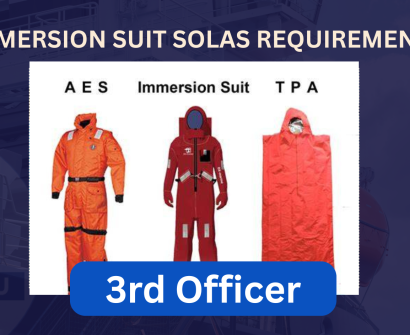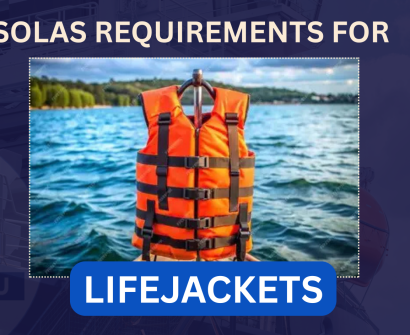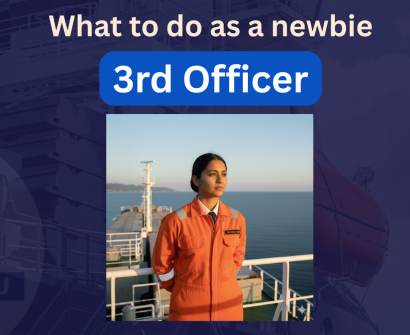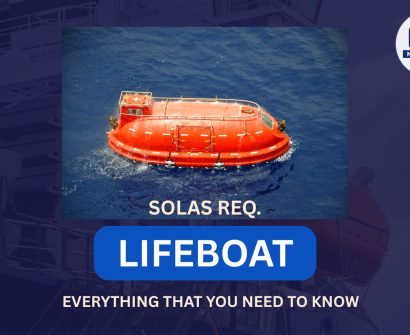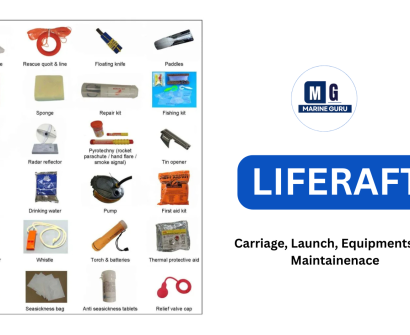Port Papers Explained for 3rd Officer: Complete Third Officer’s Guide (with Dalian Port Example)
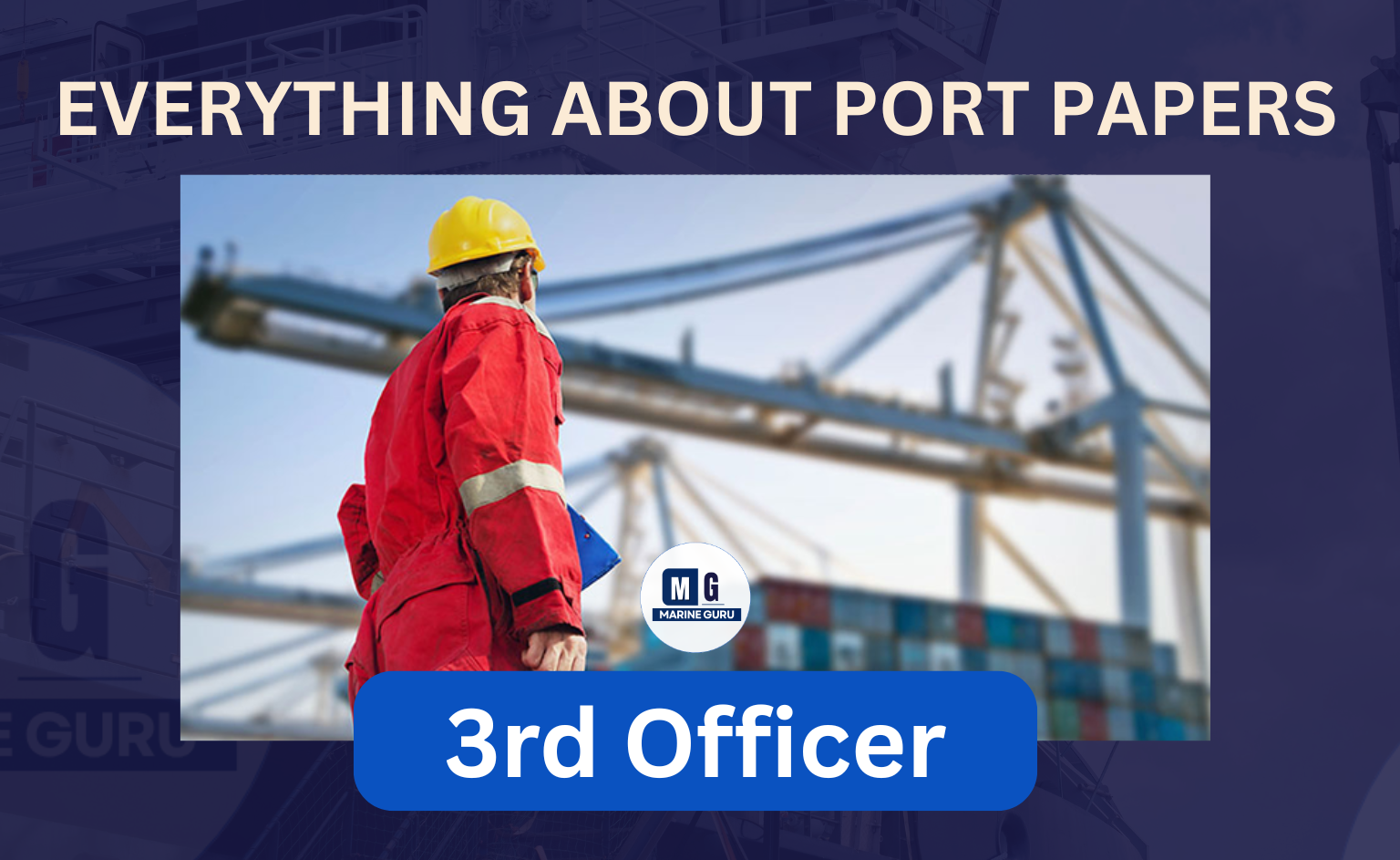
When a ship approaches port, the paperwork begins long before the anchor drops.
For a Third Officer, this is one of the most crucial — and often stressful — responsibilities on board.
In this guide, we’ll walk through a real-world example from Dalian Port, China, and explain every common port document you’ll encounter — who prepares it, why it’s needed, and what mistakes to avoid.
By the end, you’ll not only understand what port papers are but also how to prepare them smartly and systematically.
What Are Port Papers and Why They Matter
Before every port arrival, the ship’s agent sends a “Document Request List.”
It outlines all forms, certificates, and declarations required for clearance — from customs and immigration to quarantine and port health.
For example, before arrival at Dalian Port, the agent’s message looked like this:
“For good order, please send the following documents by email as soon as possible…”
This list included items like:
- Cargo discharging plan
- Storage plan
- Cargo temperature log
- Crew effect declaration
- Ship’s store declaration
- Crew list (with joining port/date)
- Passport & seaman’s book scans
- Certificate copies (CLC, DOC, SMC, ISSC, etc.)
Each of these documents forms part of what we call “Port Papers.”
They prove your vessel’s compliance, crew identity, cargo condition, and operational readiness.
Step 1 — Understanding the Agent’s Request
Every agent’s list differs, but the process is always the same:
- Receive the list 2–3 days before arrival.
- Prepare documents as per their sequence.
- Send soft copies via email before arrival.
- Keep hard copies ready for port officials.
Let’s go line by line through what was requested for Dalian Port, as explained by the officer in the vlog.
Common Documents Prepared by the Third Officer
1. Crew List (with Sign-on Details)
A vital document that lists every crew member onboard.
Include:
- Name, rank, nationality
- Passport number & seaman’s book number
- Sign-on date and port (very important)
- Birth date, CDC number, and sometimes medical expiry
💡 Tip: For Chinese, Ukrainian, or Polish crew — always attach Seaman’s Book scan copies as agents often require them.
2. Crew Passports and Seaman’s Books
Prepare one PDF file with all passport copies and another with all CDC (seaman’s book) scans.
3. Crew Effects Declaration
This form lists each crew member’s personal items, such as:
- Mobile phones
- Laptops
- Alcohol bottles
- Cigarettes
Typical format:
| Name | Rank | Cigarettes | Alcohol (Bottles) | Laptop | Mobile | Signature |
|---|
⚠️ Important: Most ports restrict declaration — e.g., not more than 200 cigarettes per person.
4. Ship’s Store Declaration
Lists all stores and consumables on board, such as:
- Tank quantities: FO, DO, Fresh Water
- Provision items: Frozen, dry, canned foods
- Bonded items: Cigarettes, wine, liquor
📍How to collect data:
- Take fuel & water figures from the engine department.
- Get provisions data from Chief Cook.
- Add bonded items (cigarettes, liquor) from the Bond Store.
5. Last 10 Ports of Call
This record shows the vessel’s travel history and security level.
| Port Name | Arrival | Departure | Purpose of Call | Voyage No. | Security Level |
|---|---|---|---|---|---|
| Singapore | 12 Aug | 14 Aug | Bunkering | 073 | 1 |
| Dalian | (current) | — | Discharging | 074 | 1 |
📘 Tip:
Many authorities use this list for customs and security checks — accuracy is crucial.
6. Ship Certificates (PDF Folder)
These usually include:
- Certificate of Registry
- Load Line Certificate
- CLC (Civil Liability Certificate)
- DOC, SMC, ISSC
- IOPP, IAPP, and other statutory certificates
💡 You can prepare a zip folder named Dalian_Port_Certificates.zip and send it directly to the agent.
7. Crew Vaccination & Medical List
Some ports (especially during or post-COVID) require:
- Yellow Fever vaccination expiry date
- Medical certificate expiry
- Place of issue
You can add these as extra columns in the crew list for quick reference.
8. Crew Currency Declaration
Lists how much money each crew member is carrying:
| Name | USD | EUR | RMB | HKD | Signature |
|---|
⚠️ Always get individual signatures before sending.
9. Maritime Declaration of Health (MDH)
Required by Port Health Authority.
Declares that there are no illnesses, injuries, or deaths onboard in the last voyage.
Prepared and signed by Master, usually countersigned by ship’s doctor or officer in charge.
10. Passenger List (Form 6)
Even if there are no passengers onboard, a NIL declaration must be sent.
| Passenger Name | Nationality | Embarked At | Disembarked At |
|---|---|---|---|
| NIL | NIL | NIL | NIL |
11. Nil List (N-List)
Declares that no restricted items are on board:
Passengers: NIL
Stowaways: NIL
Animals: NIL
Arms & Ammunition: NIL
Drugs/Narcotics: NIL
12. Narcotic List
Usually handled by Second Officer or Master, but you may prepare it:
| Item Name | Quantity | Expiry | Location |
|---|---|---|---|
| Morphine | 2 vials | 2026 | Master’s Safe |
| Diazepam | 10 tabs | 2025 | Medical Locker |
13. Ship’s Money List
Declaration of how much cash is onboard, usually in USD.
Handled by Master or Chief Officer but often attached to port papers.
14. Ballast Water Reporting Form
Filled by Chief Officer but sent through you (Third Officer).
Always check for exchange record and coordinates.
15. Frozen Product Statistics (for certain Chinese ports)
Used when carrying frozen cargo:
| Item | Quantity (kg) | Source Port | Temperature (°C) |
|---|---|---|---|
| Frozen Shrimp | 3500 | Busan | -20°C |
16. Crew Entry/Exit Health Declaration
In ports like Dongying or Ningbo, each crew fills out personal health info for both arrival and departure.
17. Security and Cargo Information Declaration
Includes ISPS compliance data and basic cargo info — signed by Master and Ship Security Officer.
18. Dangerous Goods Manifest
If carrying IMDG cargo — declaration must include:
- UN number
- Class
- Flashpoint
- Quantity and stowage position
19. Garbage Disposal Record
Some ports, especially in Russia, require last garbage discharge record and disposal receipts.
20. Crew and Officer Certificates
Some authorities require scanned copies of:
- COC / COP certificates
- GMDSS license
- Training certificates (especially for the Chief Cook)
Additional Reference: Guide to Port Entry
The Guide to Port Entry (Lloyd’s) is a key publication available on board.
It includes:
- Local regulations
- Agent contacts
- Health & customs requirements
- Port paper checklists
✅ Pro Tip:
Use the Guide to prepare your documents in advance even before receiving the agent’s email.
When the list arrives, you’ll only need to verify, not start from scratch.
Port Papers at a Glance
| Document Type | Prepared By | Purpose / Submitted To |
|---|---|---|
| Crew List | 3/O | Immigration |
| Crew Effect Declaration | 3/O | Customs |
| Ship Store Declaration | 3/O + C/COOK | Customs |
| Vaccination / Medical List | 3/O | Health Authority |
| Maritime Declaration of Health | Master | Health Authority |
| Last 10 Port of Call | 3/O + Master | Immigration & PSC |
| Ballast Water Reporting | C/O | Environmental Dept. |
| Cargo Plan, Temp Log | C/O | Port & Shipper |
| Dangerous Goods Manifest | C/O | Customs |
| Ship Certificates (PDF) | 3/O | Port State / Agents |
| Crew Currency & Ship Money | Master | Customs |
| Garbage Record | C/O | Port & PSC |
| NIL List | 3/O | Customs & Health |
| Narcotic List | 2/O or Master | Port Health / Customs |
⚠️ Common Mistakes by Junior Officers
- Forgetting crew sign-on details in the crew list — leads to rejection.
- Sending unverified quantities in store declaration — causes fines.
- Missing signatures/stamps — all forms must be signed by Master.
- Not scanning pages into single PDFs — agents prefer consolidated files.
- Waiting till last minute — always prepare drafts 2 days before arrival.
FAQs: Port Papers & Third Officer Duties
Q1. Who prepares the port papers?
The Third Officer compiles most documents, but inputs come from Chief Officer (cargo), Chief Cook (provisions), and Master (certificates & declarations).
Q2. When are port papers sent?
Usually 24–48 hours before arrival via email to the agent.
Q3. What software is used?
Standard templates in MS Word/Excel/PDF, often pre-stored in the company document system.
Q4. How can you prepare in advance?
Use the Guide to Port Entry for every upcoming port and start building drafts 3–4 days early.
Q5. What’s the difference between customs and health declarations?
Customs covers stores, money, effects, while Health includes crew medical, vaccinations, and disease status.
Life Saving Appliances (LSA) under 3rd Officer:
* Lifeboats (enclosed, rescue boats) and launching arrangements
* Liferafts and their hydrostatic release units
* Lifebuoys (with lights, smoke signals, and lifelines)
* Lifejackets (with lights and whistles) for all persons on board
* Immersion suits and thermal protective aids
* Emergency Position Indicating Radio Beacons (EPIRBs) and Search and Rescue Transponders (SARTs)
* Rocket parachute flares, hand flares, and buoyant smoke signals
* Line throwing appliances
* Muster list and SOLAS/LSA/Fire safety training manuals and posters
* Spare batteries, bulbs, and supporting inventory for LSA
Fire Fighting Appliances (FFA) under 3rd Officer
* Fire extinguishers (of all types) throughout accommodation and deck areas
* Fire hoses, hydrants, and nozzles
* Fireman’s outfits (protective clothing, boots, helmets, gloves)
* Self-contained breathing apparatus (SCBA) sets
* Fire blankets and sand buckets
* Fire alarms and detection systems
* Fire main and emergency fire pumps
* Fixed firefighting systems (CO2, foam, water mist, dry powder, etc.)
* Emergency escape breathing devices (EEBD)
* Portable and fixed communication equipment used in fire emergencies
Additional Responsibilities
* Keeping LSA/FFA inspection and maintenance records up to date (PMS)
* Training and familiarizing crew with the use of all equipment
* Ensuring LSA/FFA manuals, posters, and muster lists are current and correctly displayed
* Planning inventory needs and raising requisitions for expiring items/spares
* Reporting deficiencies and planning for shore-based inspections or servicing as required


